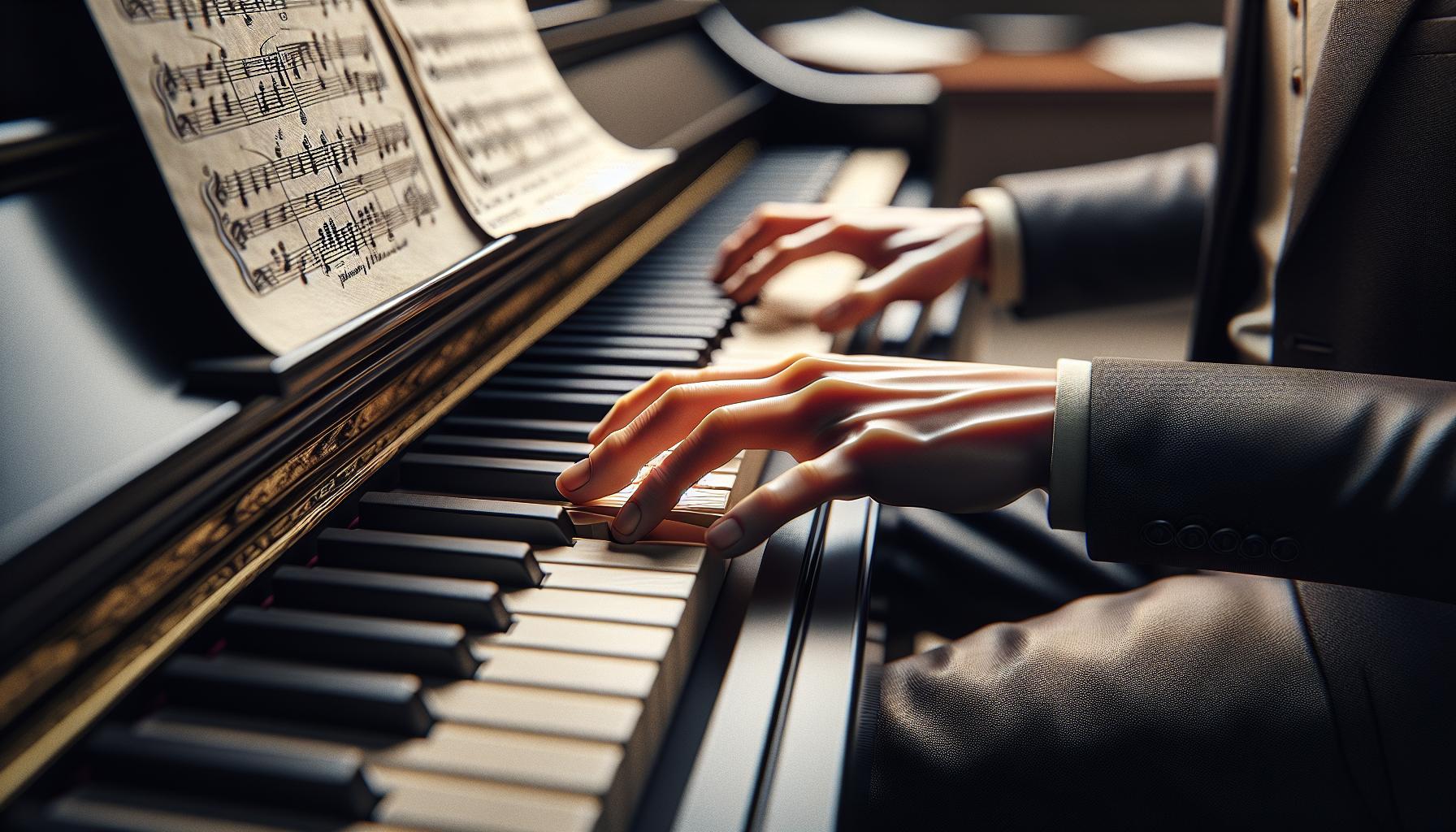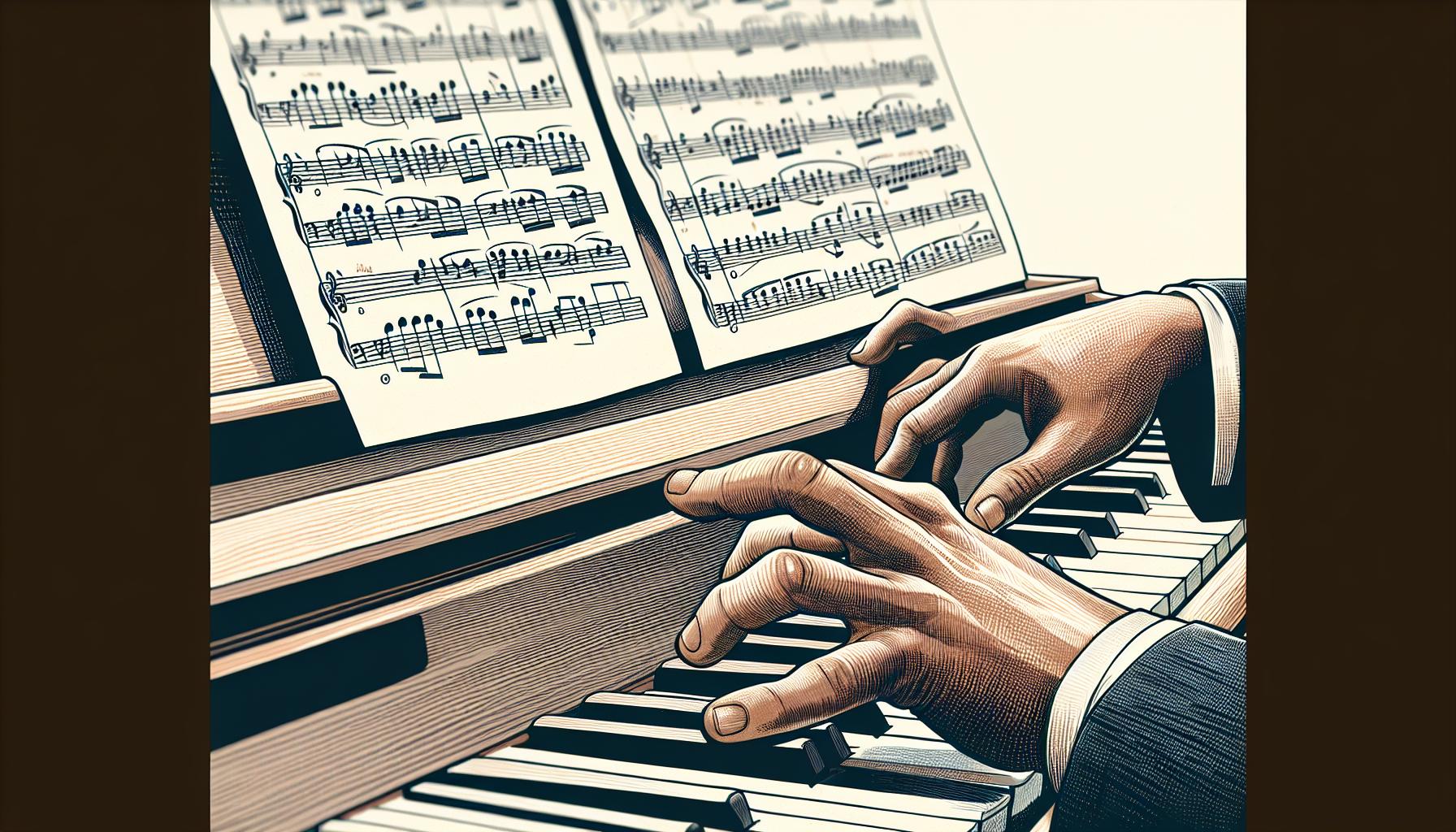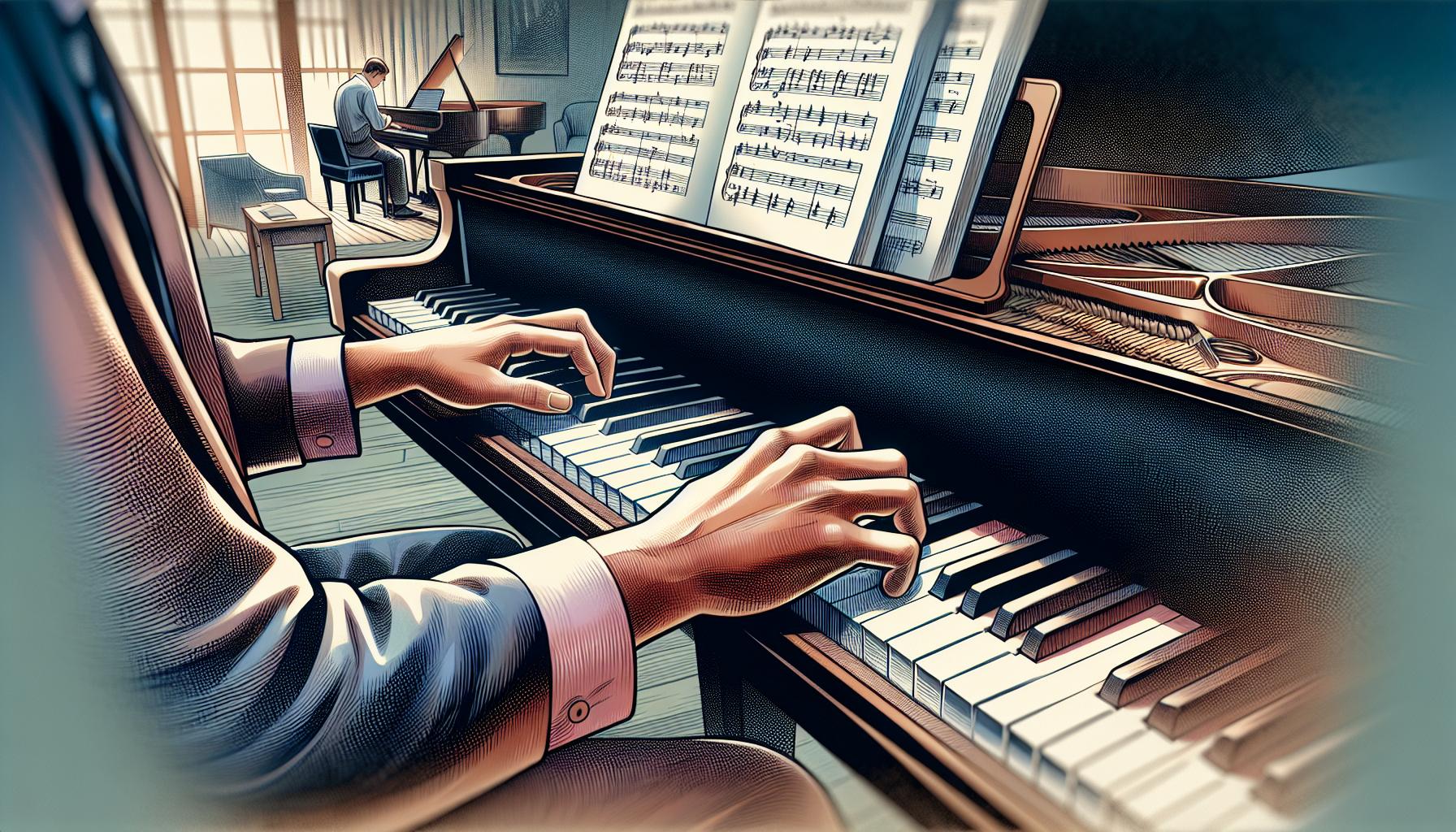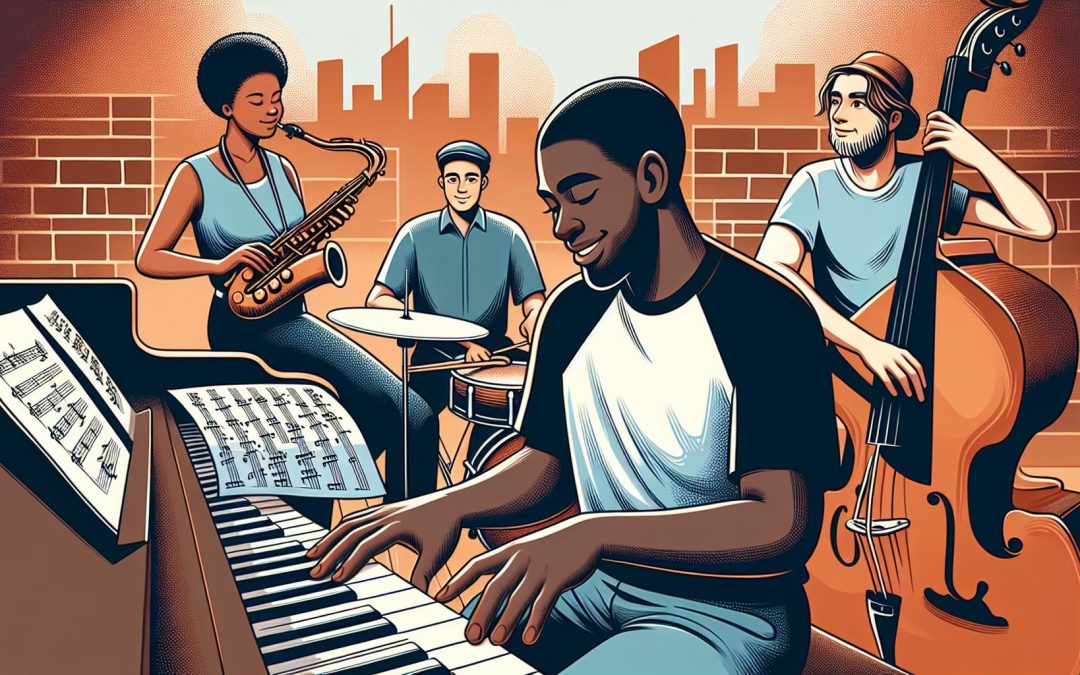Diving into the world of jazz piano can seem like a daunting task for beginners. With its rich history and complex techniques, it's easy to feel a bit overwhelmed. But don't let that scare you away! Learning jazz piano is an incredibly rewarding journey that opens up a new universe of musical expression.
The key to starting off on the right foot is to approach it with curiosity and patience. Whether you're a complete novice at the piano or you've dabbled in other musical styles, jazz has something to offer everyone. It's not just about mastering scales and chords; it's about finding your own voice within the music.
So, grab a seat at the piano and let's dive into the mesmerizing world of jazz. With a little guidance and a lot of practice, you'll be swinging and improvising in no time.
Understanding the Basics of Jazz Piano
Dipping one's toes into the intricate world of jazz piano starts with a solid grasp of the basics. Before one can swing or improvise with the likes of Thelonious Monk or Bill Evans, understanding the foundational elements is essential. Jazz piano isn't just about learning scales and chords; it's about how these elements interact to create the distinctive sound that has captivated listeners for decades.
One of the first steps for beginners is getting familiar with jazz chords. These aren't just your standard major and minor chords; jazz chords often incorporate sevenths, ninths, and sometimes even more complex extensions. These chords create the rich, colorful soundscapes that jazz is known for. Learning these will allow players to start experimenting with their sound and begin the journey of finding their unique style.
Another crucial aspect is rhythm. Jazz rhythm can be elusive due to its syncopated beats and swung notes. This means some notes are purposefully played off the standard beat, creating that classic "swing" feel. It's this rhythmic flexibility that gives jazz its signature groove. Beginners should focus on listening to as much jazz as possible to internalize this rhythm, tapping along to tunes to familiarize themselves with its distinct pulse.
Improvisation is at the heart of jazz. For many beginners, the idea of improvising can be daunting, but it's less about playing random notes and more about expressing oneself within the framework of a song. Improvisation starts with small steps, such as altering a melody slightly or playing around with chord voicings. Encouragement comes from understanding that every jazz great started with these small steps before soaring into full-blown improvisational flights.
Listening plays a monumental role in learning jazz piano. Immersing oneself in the works of jazz legends not only provides inspiration but also serves as an invaluable lesson in phrasing, timing, and emotional expression. Creating a diverse listening list that includes pioneers like Duke Ellington and modern masters like Herbie Hancock can reveal the vastness of jazz's landscape and its evolutionary path.
Here are a few key points beginners should focus on:
- Master Jazz Chords and their extensions
- Get comfortable with Swing Rhythm and syncopation
- Begin experimenting with Improvisation
- Actively Listen to a wide range of jazz music
Exploring Essential Techniques for Beginners

When embarking on the journey of learning jazz piano, beginners quickly realize the importance of honing specific techniques to truly embody the spirit of jazz. It's not just about playing notes; it's about bringing them to life with style and emotion. This part of the learning curve is both challenging and exciting, offering a window into the vast landscape of jazz expression.
Mastering the Art of Jazz Chords
First and foremost, understanding and mastering jazz chords stands as a foundational skill for any aspiring jazz pianist. Unlike classical piano, jazz chords often incorporate complex extensions and alterations, adding depth and color to the music. Beginners should start with seventh chords—major, minor, dominant—and gradually introduce extensions such as 9ths, 11ths, and 13ths. It’s also essential to familiarize oneself with chord voicings, which can drastically change the texture of a piece.
Swing Feel and Rhythmic Patterns
Another crucial aspect of jazz piano is getting comfortable with the swing feel. The swing rhythm—a cornerstone of jazz—differs significantly from the straight rhythms found in classical and pop music. It imbues jazz with its characteristic "groove" that propels the music forward. Practicing with a metronome can help, but listening to and mimicking classic jazz recordings is invaluable for internalizing this unique timing.
The Role of Improvisation
Improvisation is the heart and soul of jazz music, and for pianists, the freedom and creativity it offers are unparalleled. Beginners might feel intimidated by the seemingly effortless flow of jazz improvisation. However, starting with simple scales, such as the blues or pentatonic scales, and experimenting with creating melodies can open the door to improvisation. The key is to start small and remember that making mistakes is part of the process. Improvisation is as much about experimentation and self-expression as it is about skill and knowledge.
Developing a Strong Left Hand
For jazz pianists, the left hand is not merely an accompaniment; it’s an integral part of the rhythm and harmony. Beginners should work on strengthening their left-hand techniques, such as walking bass lines and comping (accompanying) patterns. These techniques not only provide a solid foundation for the music but also allow the right hand more freedom to explore melodies and improvise.
Building a Strong Foundation with Scales and Chords

Embarking on the journey to master jazz piano, beginners soon realize the pivotal role that scales and chords play in building a strong musical foundation. It's not just about playing these elements individually but understanding how they intertwine to create the rich, complex soundscapes that define jazz music.
Scales are the backbone of jazz improvisation. They're more than mere sequences of notes; they're the pallet from which a pianist paints their sonic pictures. For starters, it's vital to get comfortable with the major and minor scales, as these provide the basis for more complex modes and alterations found in jazz music. Moreover, the blues and pentatonic scales are indispensable for achieving that authentic jazz sound, offering a gateway to soulful improvisation and melody construction.
Chord mastery, on the other hand, involves delving into the colorful world of seventh chords, extended chords, and altered chords. These chords offer a vast array of harmonic possibilities that are essential for jazz comping and chord-melody arrangements. Here are a few key points beginners should focus on:
- Major 7th, Dominant 7th, Minor 7th: Understanding these fundamental seventh chords is crucial. They serve as the basic building blocks for more intricate chord voicings.
- Extended Chords (9th, 11th, 13th): Jazz piano thrives on these extensions, which add depth and complexity to harmonic progressions.
- Chord Inversions: Exploring different inversions of chords helps in creating smooth transitions and voice leading in jazz progressions.
- Altered Chords: Adding alterations like b9, #9, #11, and b13 to chords introduces tension and release, a characteristic feature of jazz harmony.
Integrating scales and chords into one's practice routine involves more than rote memorization. It's about experimenting with how these elements interact in various musical contexts. Playing through jazz standards, for instance, offers invaluable insights into the practical application of scales and chords. Listening to recordings and live performances by seasoned jazz pianists provides beginners with a template for their improvisational and comping endeavors.
Developing Your Improvisation Skills

Improvisation is the heart and soul of jazz piano, enabling musicians to express their individuality through spontaneous musical conversation. For beginners, the thought of improvising can seem daunting, but with patience and practice, they'll find it becomes a natural and exhilarating aspect of playing jazz.
Start by listening to a wide range of jazz music. Immersion is key. The more one listens, the more they absorb the nuances and subtleties of different styles. From the swing of Duke Ellington to the complex harmonies of Bill Evans, each artist offers a unique perspective on improvisation. Beginners should try to internalize the melodies and rhythms they enjoy, using them as a springboard for their creative exploration.
Next, practicing scales and chords is essential. As previously discussed, a solid understanding of blues and pentatonic scales, along with major and minor chords, provides the building blocks for improvisation. However, instead of simply running these scales up and down the piano, beginners should experiment with rhythm, timing, and articulation to make their practice sessions more engaging and musically relevant.
Learning licks and phrases from favorite solos can significantly boost improvisational skills. A lick is a short musical phrase used in solos and improvisations. By learning these licks, beginners not only expand their musical vocabulary but also begin to understand how jazz musicians construct solos. They should transcribe these phrases by ear if possible, as this hones their listening skills and deepens their understanding of jazz harmony and melody.
Call and response exercises are another effective way to develop improvisation skills. This technique involves playing a phrase (call) and then responding to it with another phrase. This can be practiced alone, with a recording, or with a teacher. The key is to listen intently to the call and respond in a way that complements or contrasts it melodically.
Incorporating backing tracks into practice sessions can also be incredibly beneficial. These tracks provide a rhythmic and harmonic foundation over which to improvise, simulating the experience of playing with a band. They encourage beginners to keep time, listen closely, and experiment with different improvisational ideas. There are numerous resources online where one can find backing tracks for various jazz standards.
Mastering Jazz Standards and Repertoire

When delving into the world of jazz piano, mastering a solid repertoire of jazz standards is indispensable. Jazz standards serve as the foundation for learning the language of jazz, providing a skeletal framework that allows for deep musical exploration. They are not just songs; they're lessons in form, harmony, and improvisation.
For beginners, the vast library of standards might seem daunting. Start with the Classics. It's beneficial to begin with a few well-known standards, such as "Autumn Leaves," "All the Things You Are," and "Blue Bossa." These pieces demonstrate essential chord progressions and are great for honing improvisational skills. By learning these tunes, beginners can quickly start to recognize patterns and common chord changes in jazz.
Listening and Analysis play a crucial role in mastering jazz standards. Beginners should listen extensively to different versions of each standard they're learning. This not only familiarizes them with various interpretations but also introduces them to the nuances that make each performance unique. Analyzing how different artists approach the same tune can spark creativity and encourage beginners to develop their own style.
The Importance of Learning by Ear cannot be overstated. While sheet music can be a helpful guide, true mastery comes from the ability to play by ear. This skill allows musicians to pick up tunes quickly and join jam sessions with ease. Beginners should practice transcribing solos or melodies by ear, starting with simple phrases and gradually tackling more complex passages.
Practicing Chord Voicings and Progressions is essential when learning jazz standards. Beginners should familiarize themselves with rootless voicings, shell voicings, and other techniques to enrich their harmonic palette. Understanding and being able to play various chord progressions is fundamental in jazz, as it equips pianists with the flexibility to navigate through standards smoothly.
Performing with Others is a pivotal experience in the journey of learning jazz piano. Playing in ensembles or jam sessions offers invaluable experience that can't be replicated in solitary practice. It's an opportunity to apply what's been learned in a real-time setting and to learn from others. Beginners should seek out opportunities to play with fellow musicians, whether it's in a formal setting like a jazz ensemble or an informal gathering.
Conclusion
Embarking on the journey of learning jazz piano opens up a world of musical expression and creativity. By diving into jazz standards, beginners not only build a solid foundation but also connect with the rich history and language of jazz. The path involves much more than just hitting the right notes. It's about listening, feeling, and interacting with the music and musicians around you. Whether it's through mastering "Autumn Leaves" or jamming out to "All the Things You Are", each step brings you closer to finding your own voice in the vibrant world of jazz. So, keep exploring, listening, and playing. The world of jazz piano awaits.
Harlan Kilstein began playing piano during covid with no piano background at all. He taught himself how to play learning what to do and what not to do.
Today he's an advanced intermediate player and can help you grow in your skills because he learned all this on his own.








